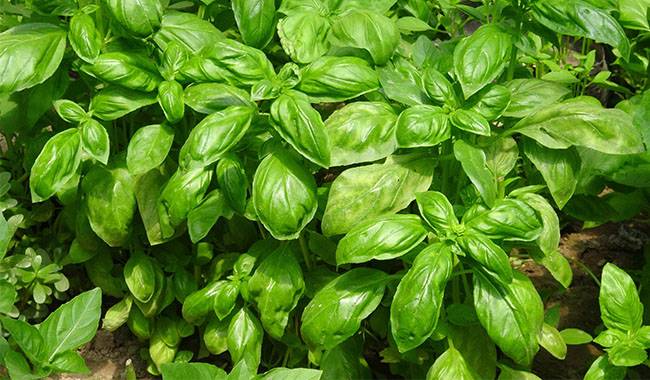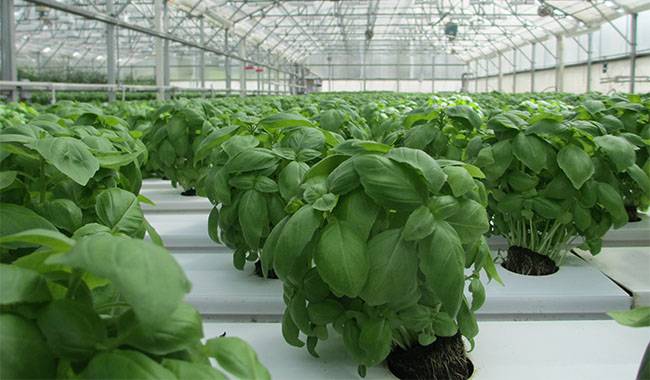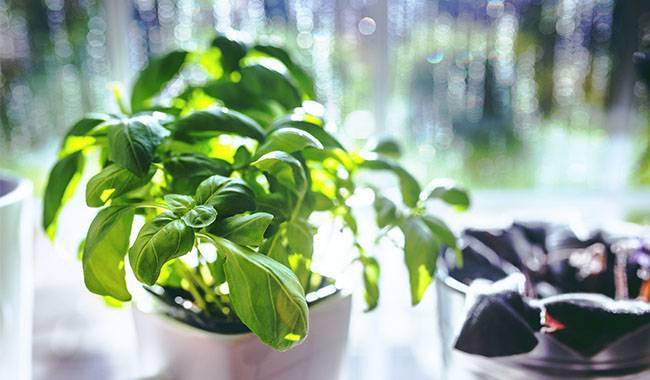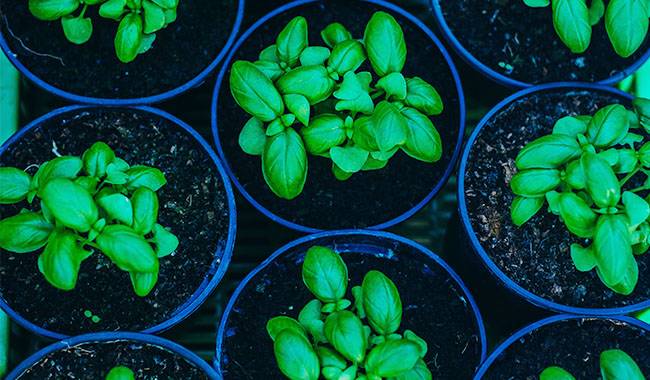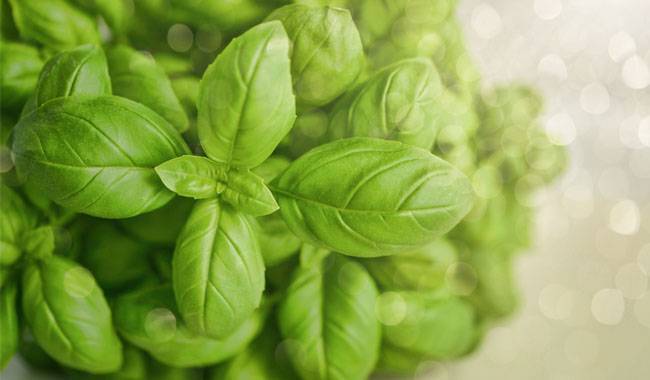
Basil is a great all-purpose seasoning for meat, fish, soups, and fresh salads – it is well known to all lovers of Caucasian and Italian cuisine. However, upon closer examination, basil turns out to be a surprisingly versatile plant.
For several seasons now, our family has been happily drinking aromatic basil tea. The bright, spicy plant has also found a worthy place in beds and vases of annual flowers.
Let’s take a look at how versatile basil can be and see what possibilities this familiar Southern spice hides.
WHY DO WE LOVE BASIL?
The Latin name for basil is Ocimum basilicum, which translates to “aromatic basil”. In fact, it is its unique, recognizable flavor that makes it so valuable.
Basil’s leaves do not vary greatly in color. Its leaves are usually light green or dark purple. The plant’s fragrance is indeed characterized by its wide variety.
All parts of basil produce essential oils, containing vitamins (B, C, PP, and K), phytohormones, and tannins. The scent emanating from this plant is so strong that my family can recognize it unmistakably from any corner of the garden.
Basil can replace many of the popular spicy herbs if desired, as there are so many varieties and species that, in addition to the traditional ones, you can find anise, clove, vanilla, and even mint.
Note: The lowest bush 8inch (20 cm) has small leaves of basil varieties 0.2-0.6inch (0.5-1.5 cm). But Russian-sized basil can grow up to 16inch (40 cm) tall with leaves as big as an adult’s hand 5.5inch (14 cm).
BASIL IN THE GARDEN: LEMON TEA IN A CUP
For a refreshing summer tea, lemon basil is especially popular in our house. Such a drink can not help but fall in love with the bright, rich citrus flavor, compared to which the usual lemon tea fades.
The seeds of this basil can be found on the market under names such as “Lemon”, “Lemon Aroma”, “Limoncello” and “Lemon Slice”.
The names may vary depending on the seed producer, but usually the same citrusy and aromatic basil is hidden underneath. Also found is “lime” basil, which has a similar flavor to lemon basil, but with a more pronounced bitterness.
In our search for the best tea, we also tasted basil “caramel”, “mint”, “vanilla” and “cinnamon”. I can’t say that these varieties taste exactly the same as caramel, mint, and cinnamon, but some of the flavors of the aforementioned spices are easily captured.
These “sweet” basil varieties are best for fruit salads, but they also make great drinks, especially when combined with lemon basil.
It doesn’t take long to make basil tea. For this reason, I usually pick the tips of the shoots to keep them from flowering. This method also strengthens the branches of the shrubs, which quickly produce new stems.
On a cup, I put 3-5 shoots with four leaves and pour boiling water. after 5 minutes, the drink becomes delicious and fragrant, and I can add sugar to flavor it if you wish.
HOW DO I DRY BASIL TO MAKE TEA?
Here at Dacha, we enjoy our own “lemon tea” all summer long. But this amazing herb can also be harvested in the winter. Cutting the spice for drying is best done before flowering, as the leaves and shoots are most fragrant during this period.
Dry basil and any other spice herbs (mint, lemon balm) by hanging them in a dry place without direct sunlight or by spreading them thinly on a piece of cloth or paper. Dried basil will not lose its flavor and aroma for several years, but from my observations, this tea still tastes a little less than fresh.
The important thing is! Despite the pleasant taste and tonic effect of basil tea, it is necessary to consume it very moderately. The leaves of this spice contain small amounts of mercury compounds that can eventually accumulate in the body.
Experts in the field of traditional medicine recommend drinking tea no more than three weeks a day, followed by a week off. It is recommended not to drink it more than once a day and not to make the drink too strong. Also, it is best not to give this tea to children under the age of 7. (You can read the other contraindications below).
To avoid negative effects, it is best that we do not drink basil tea every day, but alternate it with mint and lemon balm drinks.
BASIL ON THE GARDEN
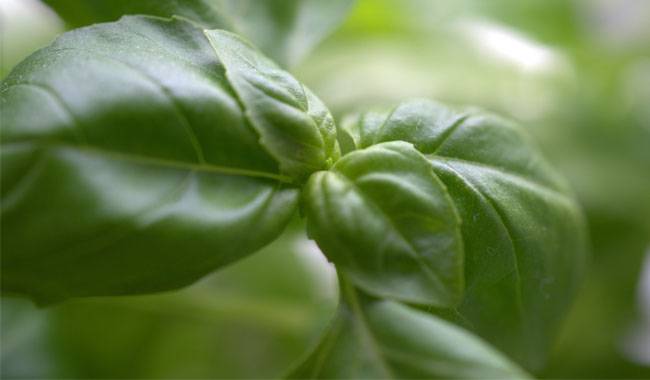
Certain basil varieties want to stand out not only because of their aroma but also because of their high ornamental qualities. Basil spherical basil, with its strong aroma, has a characteristic sultry hue and very fine, dense leaves.
It forms very densely, beautiful mounds that can be used for landscaping with short annuals, reminiscent of boxwood from afar.
The maximum height of mini basil is 8-14inch (20-35 cm) in diameter and is easy to shape and cut. Such a spice can easily be grown in pots on a kitchen windowsill or balcony.
But more interesting is to make an original floral combination with its participation, planting annual spices with bright flowers nearby – lion’s head, petunia, calibrachoa, nemesia, verbena, etc. In a flower bed, dwarf basil can be used as a primitive frame for a flower bed.
Not many people consider the usual purple basil an ornamental plant, but to me, its deep purple foliage seems no less spectacular in a flower bed than everyone’s favorite curly-leaf lettuce.
Especially since basil was commanded by God himself to be a “true” flower. Like coleus, sage, lavender, and other popular flowers, it belongs to the butterfly family and has a beautiful two-leafed flower form.
When allowed to bloom, it will tower over the pretty purple foliage with slender spikes of purple flowers that contrast with the dark stems and foliage. Such basil is excellent as a vertical accent in flower beds and balcony compositions and is especially organic in a naturalistic style mixed border or tea garden with other spicy herbs.
Normally, the small flowers of this spice do not attract much attention, but it turns out that basil has an unusual variety, ‘Queen of Thailand’, and indeed it can be described as a beautiful flowering variety. In addition to its primary use as a spice, this variety was originally considered ornamental and recommended for planting in flower beds.
Unlike other basil varieties, ‘Queen of Thailand’ is not upright, but forms flat, dense inflorescences consisting of many small lilac-colored bicolor flowers. Its dark purple tips appear more decorative against the green foliage.
This basil plant is quite vigorous, forming tall, up to 20inch (50cm), broad shrubs that can branch out on their own. In addition to its decorative function, basil “Queen of Thailand” performs its primary function as a spicy and aromatic plant, and I like to drink its leaves as tea.
To some, the smell of this basil seems a bit peppery, but to me, the Queen of Thailand basil drink has a recognizable cinnamon flavor that is just as pleasant to drink as the lemon flavor.
BASIL IN THE MEDICINE CABINET
In folk medicine, basil is used to treat many diseases of the cardiovascular system, gastrointestinal tract, skin, and eyes. In addition, basil is believed to be helpful for arteriosclerosis, hemorrhoids, cystitis, arthritis, and even for preventing the development of cancer.
Not only does basil tea taste incredibly good, but it also replenishes energy after considerable physical exertion, improves one’s psycho-emotional state, raises tone, strengthens the nervous system, improves sleep, and reduces anxiety.
The essential oils, vitamins, and minerals contained in the basil leaves make this spice useful for colds and flu. Consuming basil is believed to strengthen the immune system and effectively fight staphylococcus, enterococcus, pseudomonas, and other disease-causing bacteria.
During the cold season, dried basil leaves can be used in case of colds. To prepare a healthy drink, you need one teaspoon of dried herb per cup of boiling water. For a more intense basil effect, add a little black pepper, cloves, cinnamon, and honey or sugar to taste. Infuse the tea with the spices for 7-10 minutes.
A decoction of basil for sore throats and other throat inflammations to speed recovery helps gargle. Externally, basil is also used to wash the eyes to eliminate trachoma and redness.
This spice is also popular in the beauty world. Fresh basil juice is dabbed on acne with problematic skin. And for aging skin, vitamin dressings and masks can help tone and tighten the skin.
To do this, fresh basil leaves are turned into pulp and mixed with a little water (to add nutritional value to the mask, eggs, and honey can also be added). The mask is kept on the skin for 10-15 minutes and then washed off with water.
A water decoction of basil and hair is equally useful. After washing the hair rinse with an infusion, prepared according to the following recipe: 2-3 tablespoons of crushed dried basil leaves poured into a liter of hot water, insist for 40-50 minutes, strain and rinse the hair.
Note: Despite the many advantages of basil, do not abuse this spice in cooking and treatment without the advice of a doctor, because it is primarily a medicinal plant that has an effect on the whole body.
If you are prone to thrombosis, you must take into account that basil increases blood clotting. This is why it should not be taken after a recent heart attack or stroke. Basil drinks are also strictly contraindicated for pregnant women and people with epilepsy.
GROWING AND CARING FOR BASIL
Growing basil from seed is not difficult. Although the plant likes heat, it can be sown directly in the open ground after the threat of frost has passed. Seedlings develop fairly quickly, so if you plant without seedlings, you will have fragrant green plants by July.
I prefer to grow the plant from seedlings. To do this, I sow basil seeds indoors in small containers in mid to late April. For even sowing, it is best to mix the small seeds with sand. But even if the seedlings grow too large, I usually do not make additional pickings in individual cups and plant them immediately in bunches at the end of May.
With regular watering, the young plants can easily and painlessly take root. On moderately fertile soil, basil does not need additional fertilizer. Care is normal – weeding and watering when dry. It is quite a drought tolerant and can survive a hot week without any problems if watered only on weekends. Therefore, it is well suited for a working houseplant.
If you give basil plants a moist, sunny place, they will soon fatten up and be suitable for salads and tea drinks. To increase the formation of buds, they should be pruned regularly. But here, this happens naturally when harvesting the raw tea leaves.
When preparing beverages, it is best to use the tips of young shoots, which, among other things, prevent flowering. And, as you know, spicy plants have the highest concentration of essential oils before they start to bloom in large quantities.
Basil cannot tolerate even a slight frost, so it is very important to have time to prepare the raw material for winter before the cold weather arrives.




